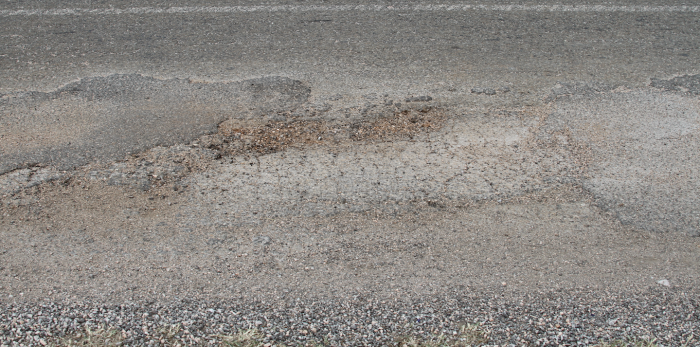Granite Shoals votes on road rennovation bonds, 'No Deer Feeding'

By Glynis Crawford Smith
The Highlander
When early voting begins Monday, Oct. 24, citizens of Granite Shoals will have two local issues on their ballots—issuance of $3 million in funds for major road reconstruction and whether or not to let a “No Deer Feeding” ordinance stand.
Both topics have been the subject of city surveys, forums and long council debate and strong opinions have been voiced on both along the way.
Road bond
The proposal of bond money for improvements to Phillips Ranch Road, Prairie Creek Road and Valley View Lane was based more that endless complaints about potholes and long years of experience in blacktop and patch deteriorating without solid base work.
The city learned earlier this year that it was a likely candidate for a matching grant through the U.S. Department of Agriculture. At a 45-55 match, the city's $3 million could be parlayed into a $6.8 million project, a dream far exceeding the single-road project first considered a possibility.
The city council is convinced the door to that kind of support is closing. Communities that can qualify for such a generous match must demonstrate more than a crying need for the infrastructure or a low-income tax base. They must be population 5,000 or less. By the next grant cycle, that status seems unlikely in the growing community.
Initial opposition to a bond election was that it would concern only one major road or only parts of the three main north-south thoroughfares.
Now that all of all three roads are included in the project, the fact it would add to city debt at all remains. It was part of the opposition to failed wastewater treatment plant proposals at least twice before. A tight reign on finances has seen staff, equipment capital projects drop from budget wish lists many times.
Eric Tanner resigned from the council to devote all his efforts to passage of the bond issue and he has been realistic in his promotion, citing 4.9 percent as the maximum interest estimated by the city's financial advisors.
"A property tax increase will be necessary to pay for the bond," he said. At the maximum estimated interest rate, additional tax income of $76.20 per year--about 20 cents a day--or a $100,000 property."
"Sixty-two percent of properties would be less and disabled and over 65 residents would have no increase."
Deer feeding
The vote on the “No Deer Feeding Ordinance” is an up or down vote on Ordinance N. 680, passed by the council July 19.
The council depended on advice of the Wildlife Advisory Committee that was formed to study the question after many citizen complaints of being overrun and run over by deer—destruction of landscape and gardens and auto accidents. After a survey, a forum and study with the Texas Parks & Wildlife Department (TPWD), the committee became a strong proponent of banning the feeding of deer.
A TPW-sanctioned pilot program of archery harvest of antlerless deer is underway through Jan. 1. But committee chairman Jason Brady told the council that TPWD urban deer specialists called the ban integral to any program to reduce numbers of deer in a city.
Master Naturalists made a case this year against feeding, based primarily on it's harm to the deer that aligns with TPWD biologists' assessments. As an inferior nutrition source, corn engenders liver disease and digestive disruption can lead to starvation, according to Sammye Childers of Highland Lakes Master Naturalists. She said feeding interferes with natural migration and builds unnatural population concentrations that are then susceptible to screw worm fly and disease. Aflatoxin content of stored feed corn can climb to levels that endanger other wildlife that consume it.
Nonetheless, almost every city council meeting or forum on the subject included at least a few opponents. Most of said they enjoyed viewing the animals or that they delighted grandchildren and other visistors by enjoying deer in their front yards and along city streets.
A petition of more than 100 signatures, including the requisite number of verified voters, brought the ordinance to the ballot.
A vote “Yes” will make the ordinance part of the city code. A vote “No” will kill it.
Sample ballots for upcoming elections can be found from Page 3b-6b of The Highlander.






